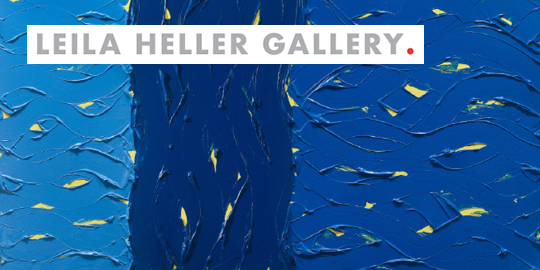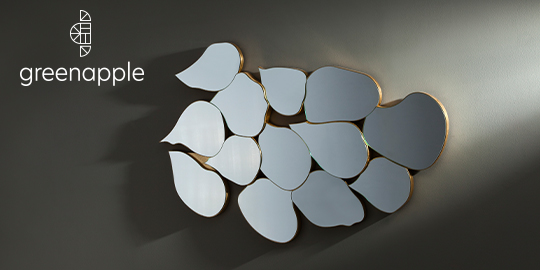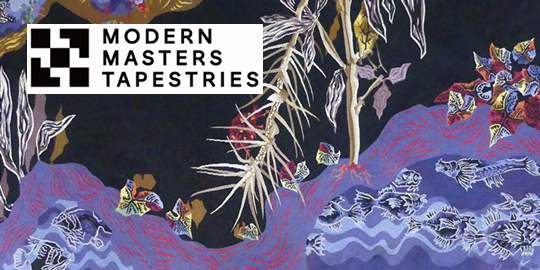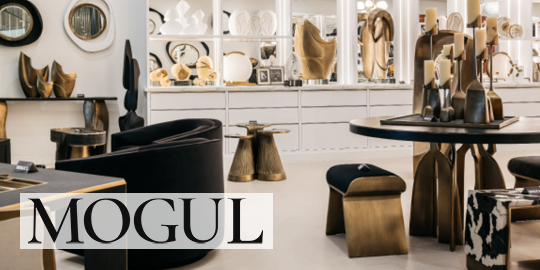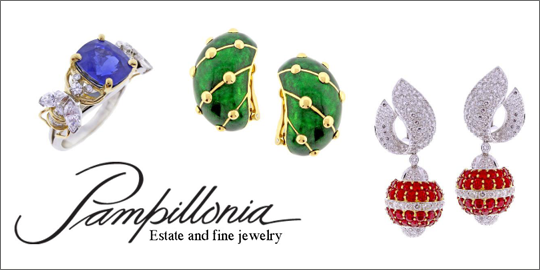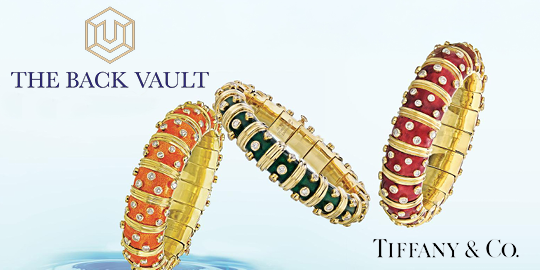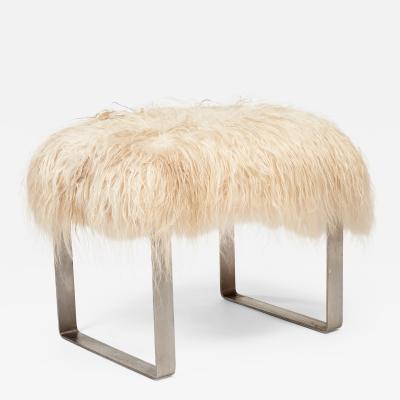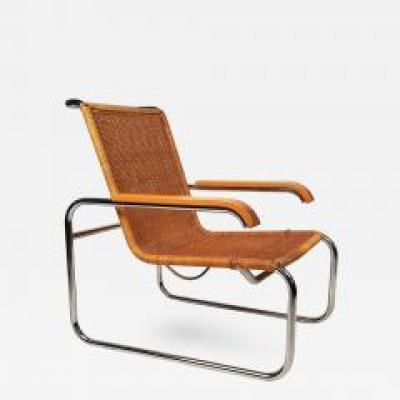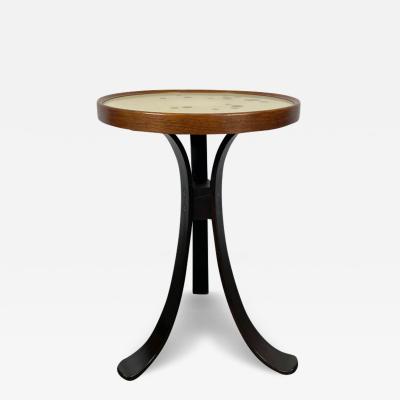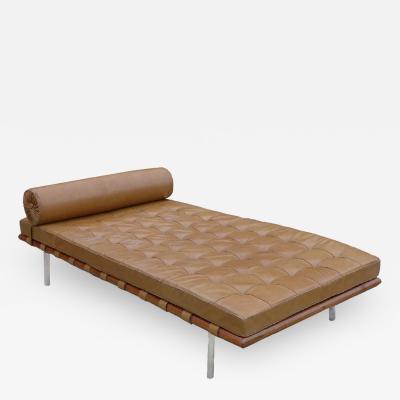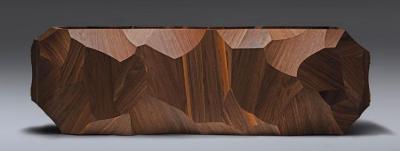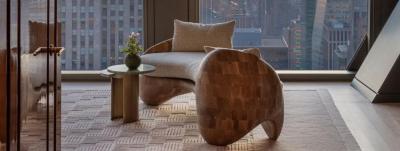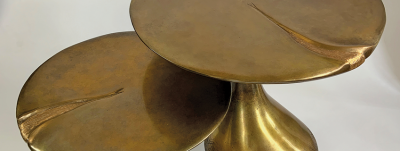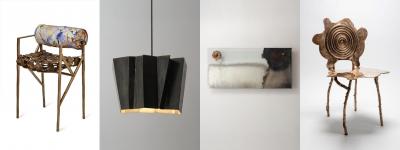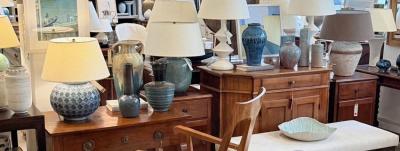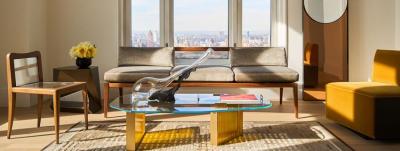Milo Baughman: The Father of California Modern Design
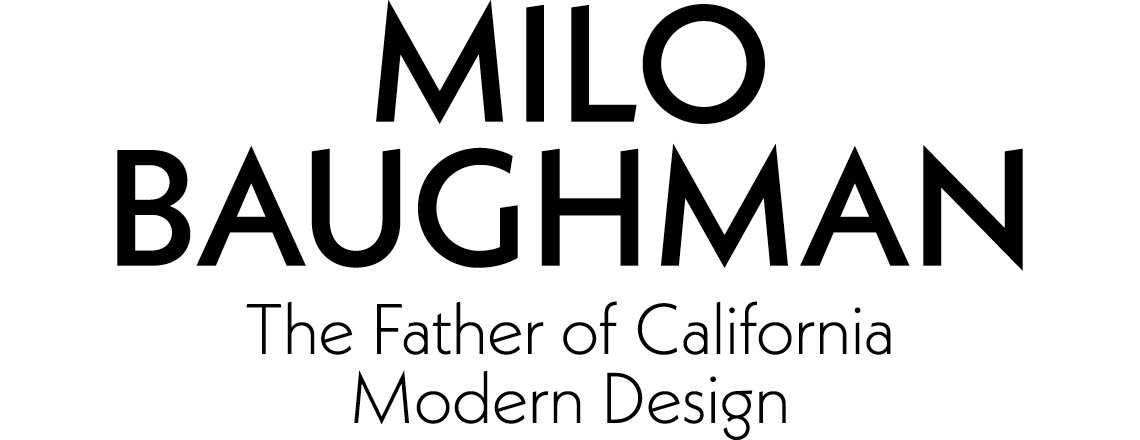 |
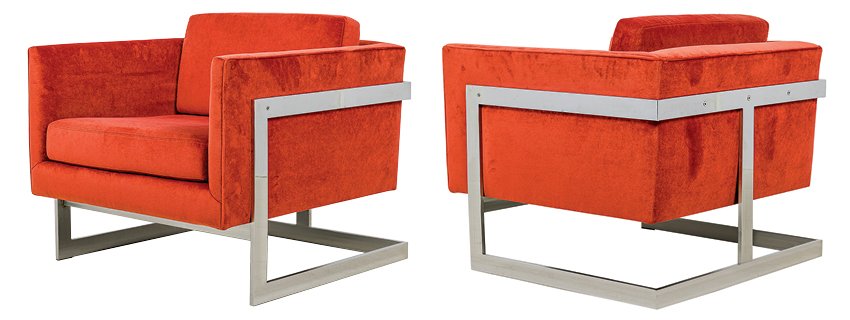 |
One of Milo Baughman’s most popular designs, the 989 ‘T-Back’ chair was originally designed for Thayer Coggin in 1968. The cantilevered upholstered cube form appears to float inside its flat-bar metal frame. A timeless classic with polished chrome frames and orange velvet upholstery. Available from Newel on Incollect.com |
Milo Baughman (1923–2003) is remembered as a designer with a modern furniture style that blends the casual, informal culture of Southern California with the legacies of Bauhaus design pioneers Ludwig Mies van der Rohe and Marcel Breuer. He synthesized a broad range of mid-century modern design trends, maintaining an unwavering commitment to comfort and function.
Baughman’s furniture was both aesthetically pleasing and practical — qualities that were somewhat uncommon at the time. He famously remarked, “Furniture that is too obviously designed is very interesting, but too often belongs only in museums.” Baughman avoided the radical extremes of modern design, finding a balance between form and function. This resulted in innovative, modern furniture that was “widely available to the public, both in terms of price and retail outlets,” as accurately summarized by a writer for The New York Times.
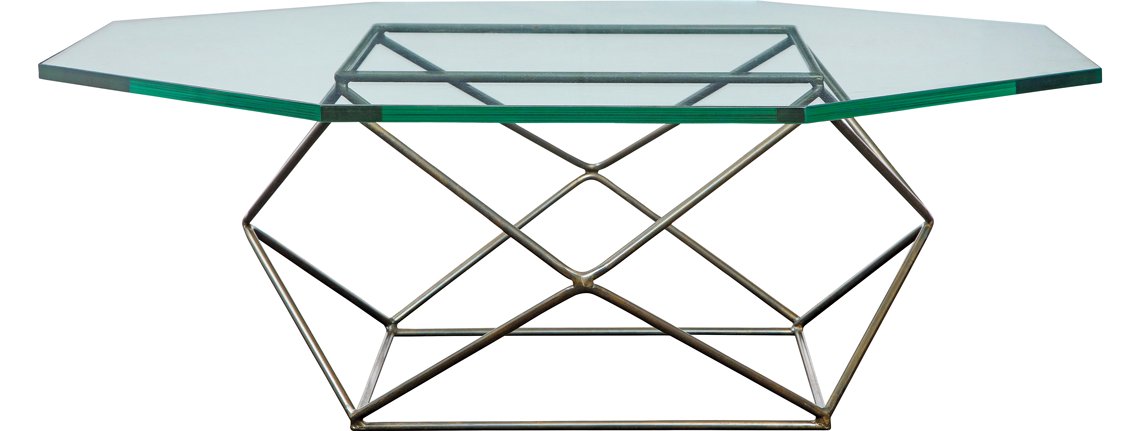 |
Undoubtedly inspired by R. Buckminster Fuller’s geodesic dome designed for the U.S. Pavilion at Expo 67 World’s Fair in Montreal, Milo Baughman came out with his ‘Geodesic Coffee Table,’ Model 5013 for Directional Furniture in the 1970s. Stunning from every angle, with a precisely engineered and visually balanced bronze geometric framework base and octagonal glass top. Available from Lobel Modern on Incollect.com |
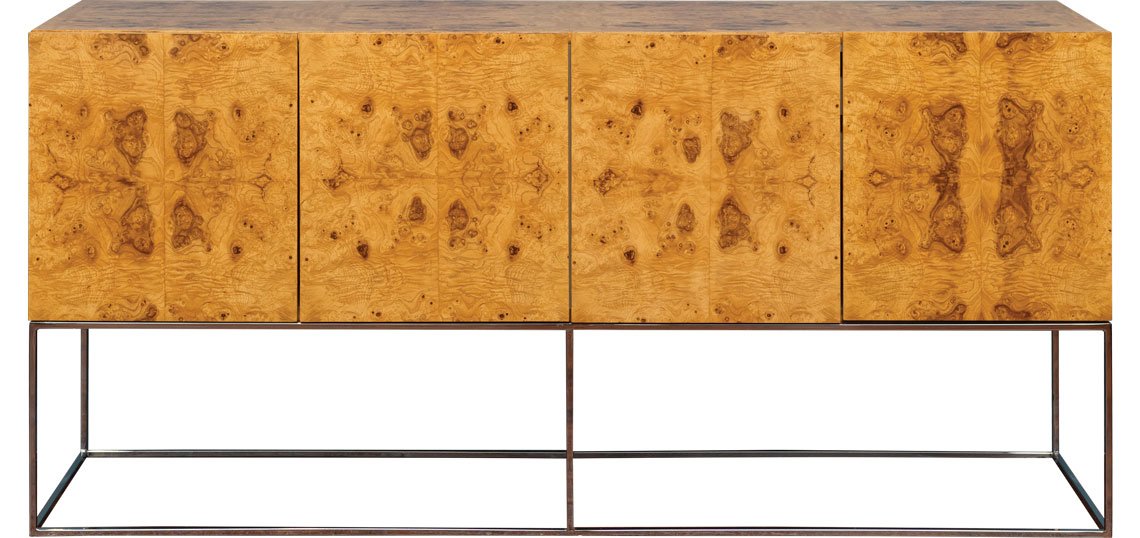 |
Burlwood and polished chrome or brass furniture burst onto the scene in the 1970s, and no one did it better than Milo Baughman. The essence of '70s glamour, with no distracting hardware, just 4 book-matched panels of dramatically burled olivewood floating on an elegant frame of polished chrome. Milo Baughman for Thayer Coggin, 1970s. Available from De Angelis on Incollect.com |
It is no surprise that Milo Baughman’s designs were popular and commercially successful. He collaborated with Directional, Drexel, Glenn of California, and other American furniture manufacturers, but it was his 50-year partnership and friendship with North Carolina furniture maker Thayer Coggin that defined his career. This collaboration resulted in enduring and classic designs, such as the cantilevered 989 T-back chair and the semi-circular 825 modular sectional sofa. Thayer Coggin continues to produce Baughman furniture today.
Coggin was destined for a career in the furniture trade, coming from a family of furniture manufacturers. After returning from World War II, he started his furniture brand in High Point, which was then the national center for furniture manufacturing. His goal was to create high-quality modern furniture that represented a departure from the more traditional styles of the time. Meanwhile, a young Milo Baughman was trying to market his designs to furniture companies in High Point and visited Coggin.
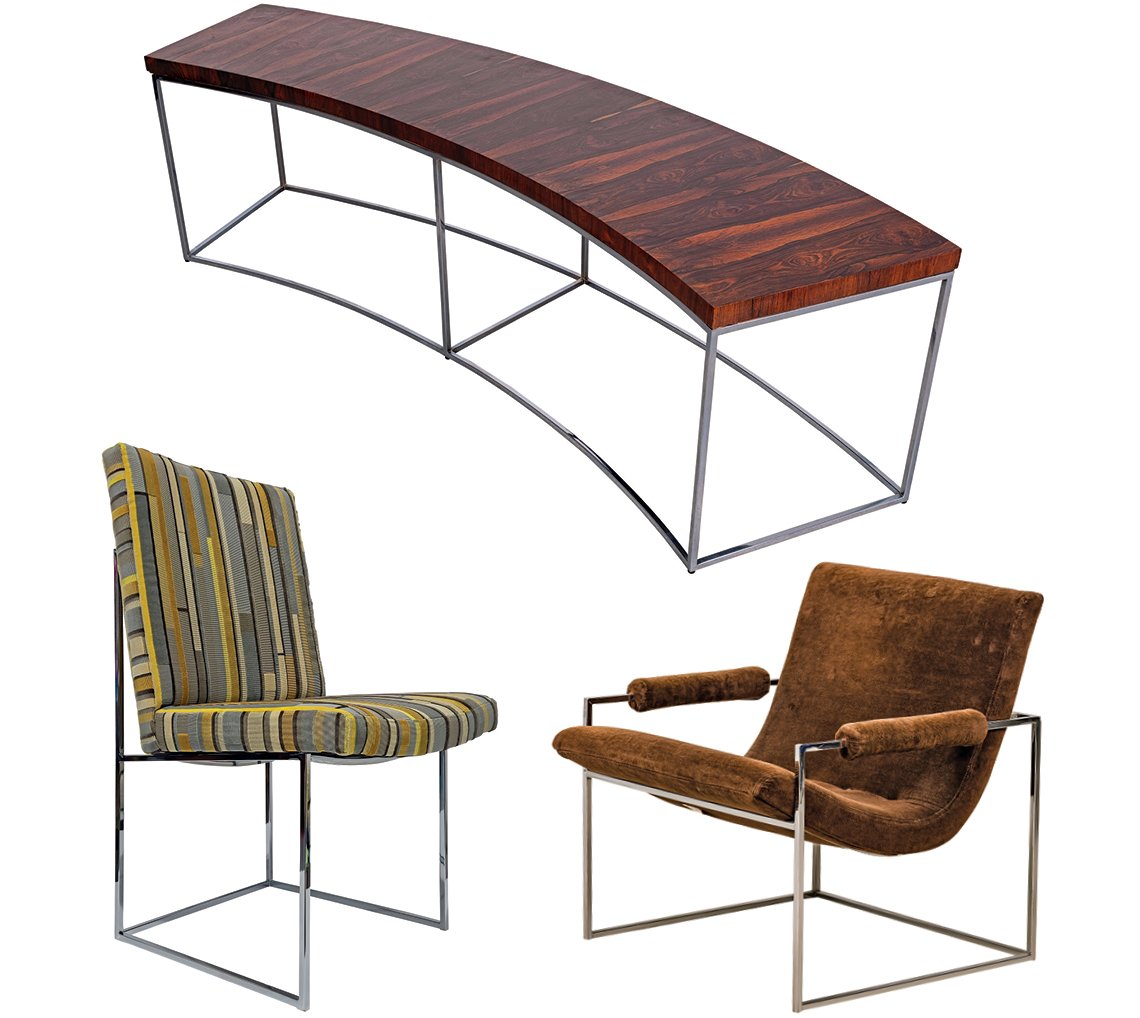 |
| Top: Beautiful Brazilian rosewood veneer and polished chrome curved sofa table by Milo Baughman for Thayer Coggin, 1968. Created to fit behind Baughman’s curved sectional sofas, which he designed to foster social interaction and an enhanced quality of life. Available from Mary Kay’s Furniture on Incollect.com Left: Designed for comfort with high, slightly angled backs, these ‘Thin Frame’ dining chairs float on polished chrome cube frames. New Maharam cut velvet upholstery. Milo Baughman for Thayer Coggin, designed in 1971. Up to 8 chairs available from circa20c on Incollect.com Right: Scoop armchair with rich brown velour upholstered seat and arms. Button tufted detail along the seam where the seat and back join, and a thin square tube polished chrome frame. By Milo Baughman for Thayer Coggin, circa 1970s. Available from Newel on Incollect.com |
In the 1940s, Baughman had established a reputation in California as a designer of streamlined furniture characterized by refined lines, inviting proportions, and appealing materials. However, his designs were often considered too radical for traditional furniture companies. “Most people who saw them turned them down,” Baughman recalled. Not Coggin. After an hour of presentations, Coggin stood up and declared, “This isn’t like anything I’ve ever seen before, but I like it. Let’s do it!”
Baughman drew inspiration from Hollywood set designs, later stating, “I’m much more interested in the atmosphere of a space than in design as such... I used to watch Fred Astaire and Ginger Rogers films twice: once to admire their incomparable dancing and a second time to appreciate the sets, which were so unashamedly modern.” He was captivated by the materials and shapes, recalling, “I loved the glamorous, oversized, streamlined furniture. I loved its mixture of bold yet controlled proportions, sophistication and simplicity, daring and restraint.”
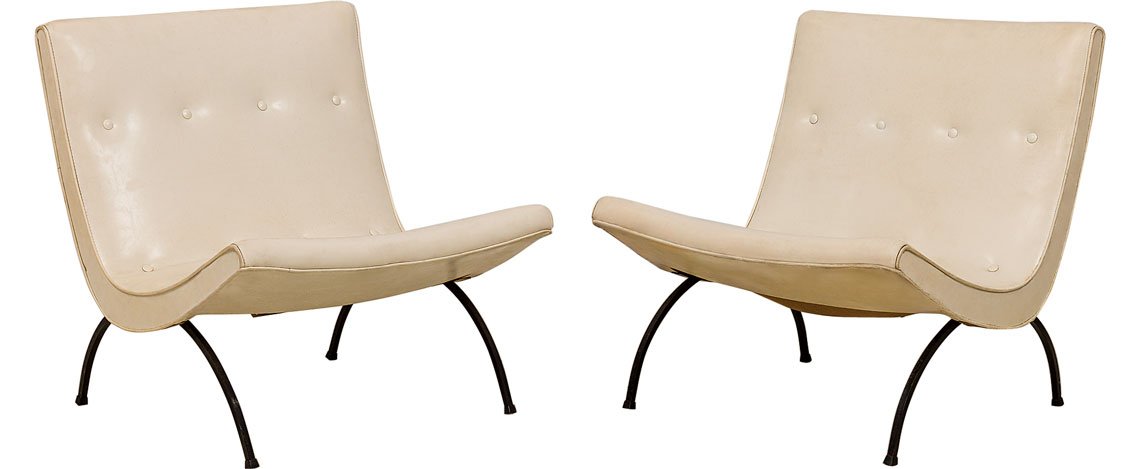 |
Sporting a sleek profile combined with ergonomic design, the low slung ‘Scoop’ chairs in white button-tufted vinyl upholstery with black iron legs. Originally designed by Milo Baughman for James Inc. (an early imprint of Thayer Coggin) circa 1950s, this model continued to be produced when the company evolved into Thayer Coggin. Available from Newel on Incollect.com |
Coggin hired Baughman as his lead designer, and together they began to redefine the language of home furnishings for mid-century America. For 50 years, Baughman created simple, timeless designs using a variety of new and luxurious materials, while Coggin managed manufacturing and marketing. He upheld a dedication to craftsmanship, with every piece handmade from scratch and precision upholstery.
“Milo Baughman was a real design genius,” says Jean Nelson, founder and owner of mid-century furniture gallery circa20c in Dallas, Texas, and an aficionado of the designer. “He was not only a leading American designer, but he was also largely responsible for the modern design movement in America. His decades-long collaboration with Thayer Coggin resulted in some of the most beautiful and desirable designs, which remain highly sought after even decades later.”
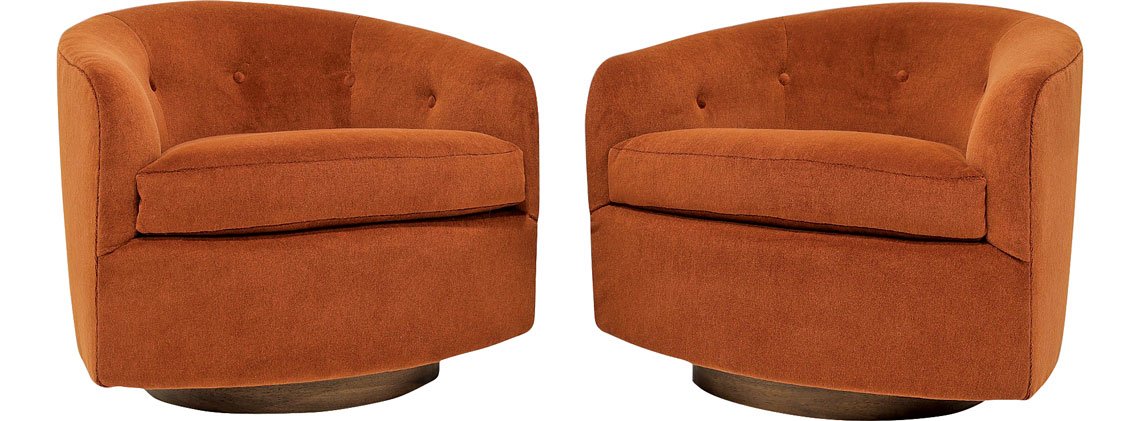 |
Swivel/tilt tub chairs with walnut bases by Milo Baughman for Thayer Coggin, circa 1970s. Newly upholstered in Mokum alpaca velvet. Available from circa20c on Incollect.com |
“The structured environment must offer significant social and emotional benefits; it cannot simply look good. In discussing the importance of environment, we are discussing primarily the quality and importance of human life.” |
— Milo Baughman, in a 1971 lecture at Oregon State University |
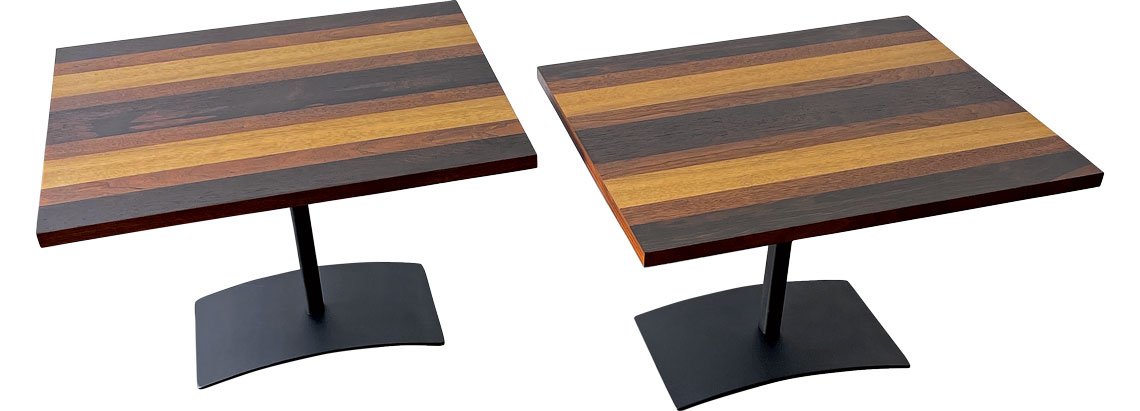 |
Striped tri-tone side tables with square tops in alternating bands of rosewood, walnut, and oak. The matte black lacquered steel base has a subtly domed rectangular foot, a design detail that enhances the style and gives it added stability. By Milo Baughman for Directional, circa 1970s. Available from Hobbs Modern on Incollect.com |
Nelson purchases and restores iconic vintage Baughman designs. “We know style and quality in furniture are always in demand,” she explains. “The thing about Baughman’s work is that the original pieces are beautifully made, with meticulous attention to detail and a commitment to handcrafted quality. He wasn’t just designing; he was dedicated to creating lasting, high-quality, functional furniture. In Thayer Coggin, he found the perfect partner to realize this complete vision.” Among Nelson’s favorite pieces are Baughman’s sofas. “He always designed the most glamorous, dramatic ‘party’ sofas — seating that was functional but commanded the room.” Currently, she has three Baughman sofas in her showroom, including a “Sit Tight” serpentine sectional sofa with a chrome base. She recently sold an enormous, eye-popping 1970s 9-cushion circular sectional sofa in toffee mohair.
Leslie Zarra Young at Cliff Young Ltd. in the New York Design Center is a longtime distributor of Milo Baughman furniture for Thayer Coggin. Her father, designer Cliff Young, knew and admired Baughman, and Zarra Young met him several times while growing up. She notes that the demand for Baughman designs never wanes: “We have represented him in New York since around 1970, which should tell you something about his enduring popularity with interior designers and homeowners.”
.jpg) |
A vignette from the showroom at circa20c: A truly spectacular circular 3-piece sectional party sofa with rosewood platform base, wrapped around a rotating Lazy Susan cocktail table in rosewood with black granite base. Both, Milo Baughman for Thayer Coggin, circa 1968. Oh, the stories they could tell! Photo courtesy circa20c. |
Zarra Young’s father often told her stories about visiting the Thayer Coggin factory in North Carolina. “He would tell me how popular the brand was — people had to wait in line to get into the Thayer Coggin factory during the High Point show. We had all of his furniture in our home; we had incredible pieces, and still do. It’s a part of the history of modern furniture design, so I keep it near and dear.”
Zarra Young continues to stock Baughman pieces in the showroom and sells them regularly to trade and retail clients. “There is a great respect for Baughman in the industry. He is iconic within mid-century design, and designers and collectors who value this period want to own at least one piece by him.”
The Roxy swivel-tilt tub chair stands out to her as an iconic, original piece of mid-century design and is characteristic of Baughman’s California design casualness and comfort, with a swivel mechanism and button tufting. “It is a chair that works in any kind of room or environment,” Zarra Young says, “it’s incredibly versatile.” But her personal favorite is the Cruisin’ lounge chair and ottoman with a laid-back, reclined leather seat suspended within a metal frame, a cylindrical headrest and padded armrests. It has been widely emulated for decades.
The Cruisin’ lounge chair remains one of Baughman’s most original and popular designs and has undergone a revival in popularity in recent years, Zarra Young says, after a pristine vintage edition of this chair appeared in a cover image for Architectural Digest. The story was on the home and design collection of actor and comedian Will Ferrell. “All of a sudden, we got a lot of calls from designers about this chair,” she says.
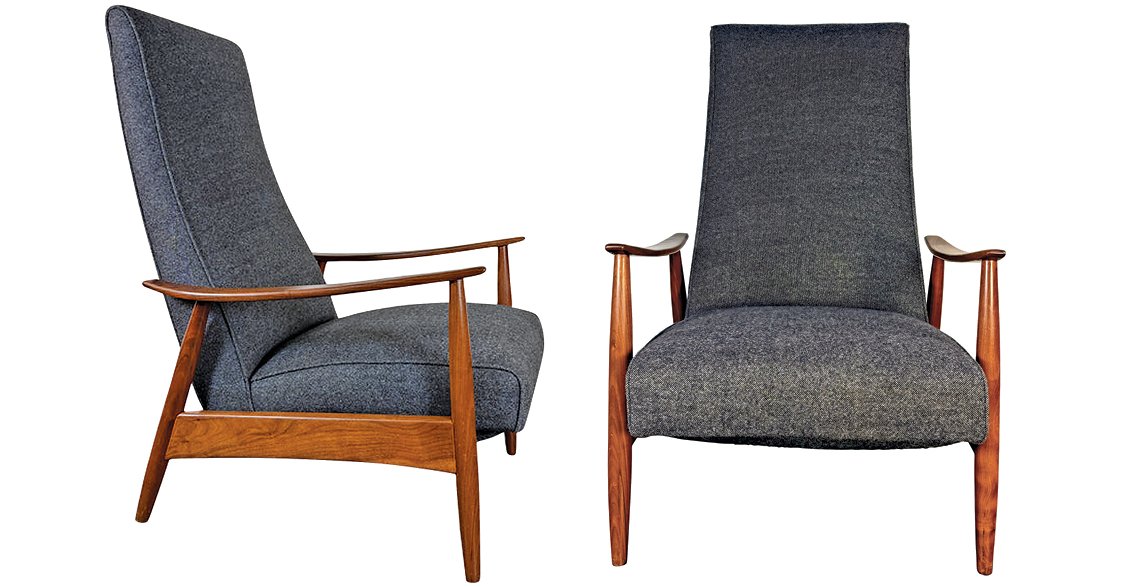 |
3-position walnut frame Recliner 74 by Milo Baughman for Thayer Coggin, circa 1960s. The tall back and contoured armrests make this a very comfortable chair. New Maharam upholstery. Available from Hobbs Modern on Incollect.com |
Interior designers and dealers reiterate that one of the most appealing qualities of Baughman’s designs is that they easily integrate into any interior. “Baughman’s pieces are sleek and modern and are very well made,” says Florida design dealer and designer Victoria Rojas, who has sold several Baughman credenzas to clients. “There is nothing ostentatious about them, so they can be mixed with interior styles as diverse as ultra contemporary design or post-war French or Brutalist design, even clients with bold artwork,” she says.
Born on October 15, 1923, in Goodland, Kansas, and raised in Long Beach, California, Baughman served in the Navy in World War II before returning to California, where he studied art and design at the Chouinard Art Institute in Los Angeles. In 1947, at the age of 24, he launched Milo Baughman Design, Inc. and early on received commissions from corporate clients in Los Angeles, such as Glenn of California, where he worked with designer Greta Magnusson Grossman, and Pacific Iron.
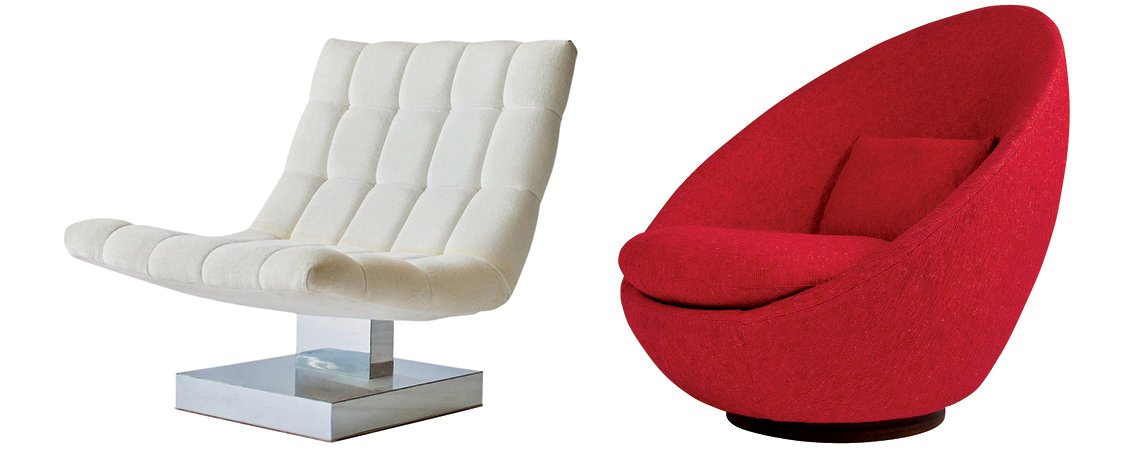 |
Left: Cantilevered pedestal lounge chair by Milo Baughman for Thayer Coggin. Original tufted white velvet upholstery with polished chrome square pedestal base. Circa 1970s. Right: Swivel lounge chair on walnut base, Milo Baughman for Thayer Coggin, circa 1970s. Original vintage fabric in very good condition. Both available from Oliver Modern on Incollect.com |
Baughman’s designs were new and innovative in many ways. He favored modern materials such as chrome, stainless steel, glass, and leather, while looking to create furniture that was both stylish and comfortable. His furniture designs appear today to be more minimal rather than strictly ‘modern,’ they are unfussy and clean-lined, with a focus on high-quality materials, finish, and craftsmanship for comfort and durability. He was designing furniture for a new era in American life.
Embodying qualities of ease, comfort, relaxation, and utility are the Z lounge chairs (produced with and without arm rests), released in the 1970s, in which an inclined, tufted seat and back are cantilevered on top of Z-shaped frames of bronze or polished chrome. They have a fine feeling of weightlessness. He made similar dining chairs for the Design Institute of America.
During the 1980s, Baughman evolved his design style to reflect the changing tastes. He produced more consciously sculptural furniture, such as a G-shaped console table and various chairs incorporating ergonomic design principles. The Feelin’ Groovy swivel chair is an updated take on the wingback chair, combining a plush seat cushion with a tall, sculptural seat back.
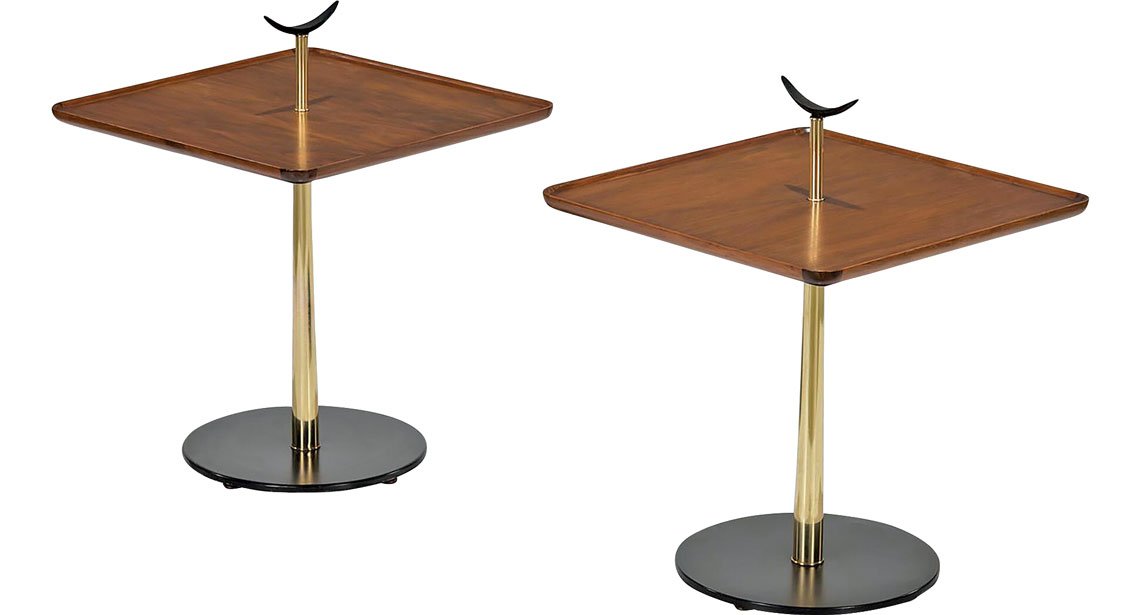 |
A rare pair of Milo Baughman ‘Cigarette Tables’ model 2000, by Milo Baughman for Arch Gordon, Chicago. Walnut top with lip molded edge, base in baked ebonized steel with brass pedestal and enameled black crescent carrying handle. These small (19 x 19”) circa 1950s occasional tables were meant to be picked up by their dainty crescent handles and conveniently positioned at your cocktail party, to hold your martini and an ashtray. Available from Portuondo on Incollect.com and at The Gallery at 200 LEX. |
“Milo Baughman’s designs embody an elegance and versatility that to us make them as captivating today as when they were introduced in the mid-20th century,” say Nicole and Ryan Hobbs. “At Hobbs Modern, we’re proud to feature a carefully selected group of his pieces that capture the essence of that era’s innovation and craftsmanship.”
Hobbs Modern currently has several multi-wood end tables by Baughman for Directional that showcase his flair for pairing materials with precision and warmth. They also have a classic Recliner 74 for Thayer Coggin, which, they say, “delivers both comfort and sophistication in equal measure.” They also have a Good Egg swivel chair, a curvy egg-shaped chair designed in 1967. “It’s a true modern classic,” Nicole and Ryan Hobbs say, “capturing that unmistakable, show-stopping silhouette that ultimately defined American modern design.”


